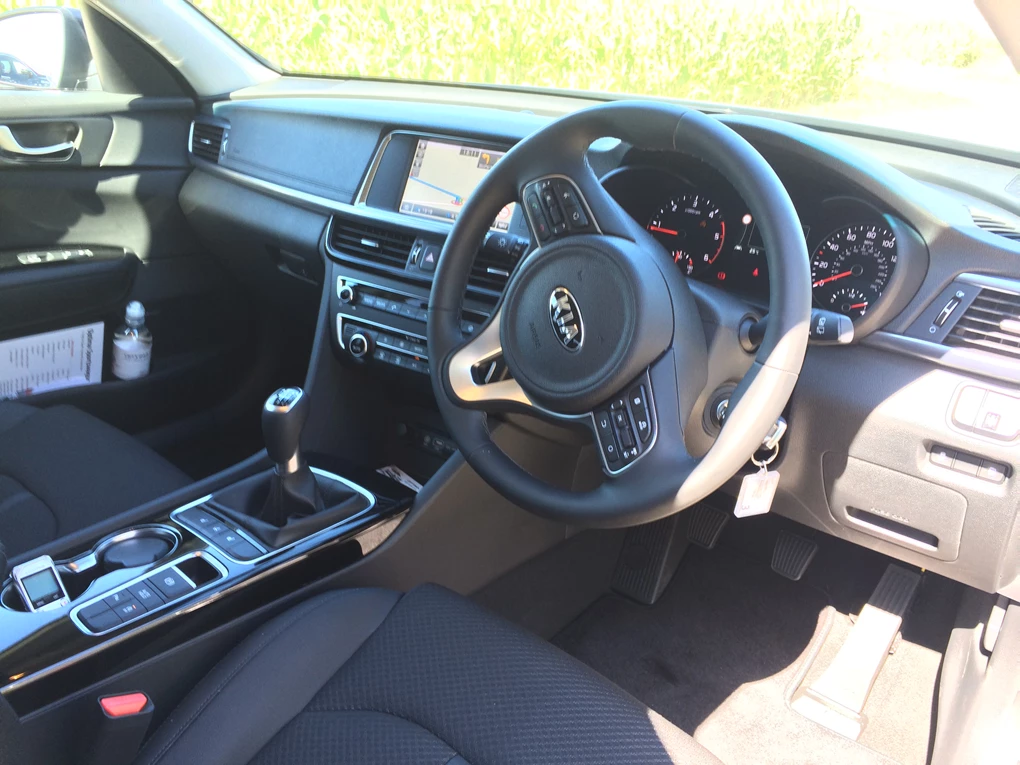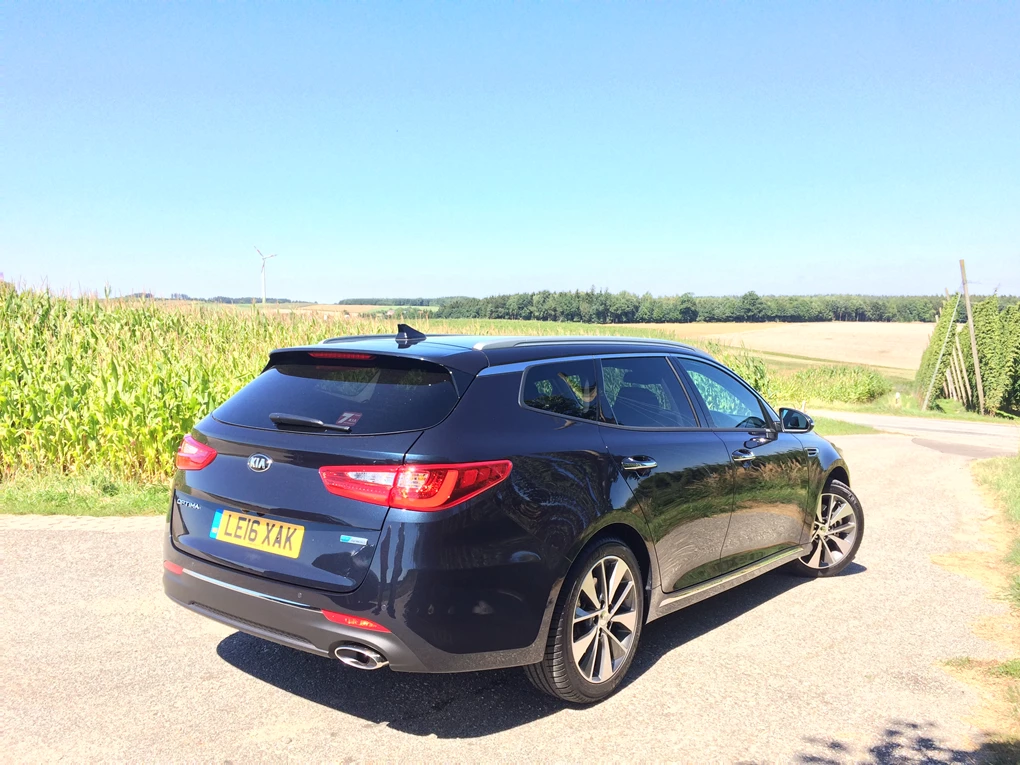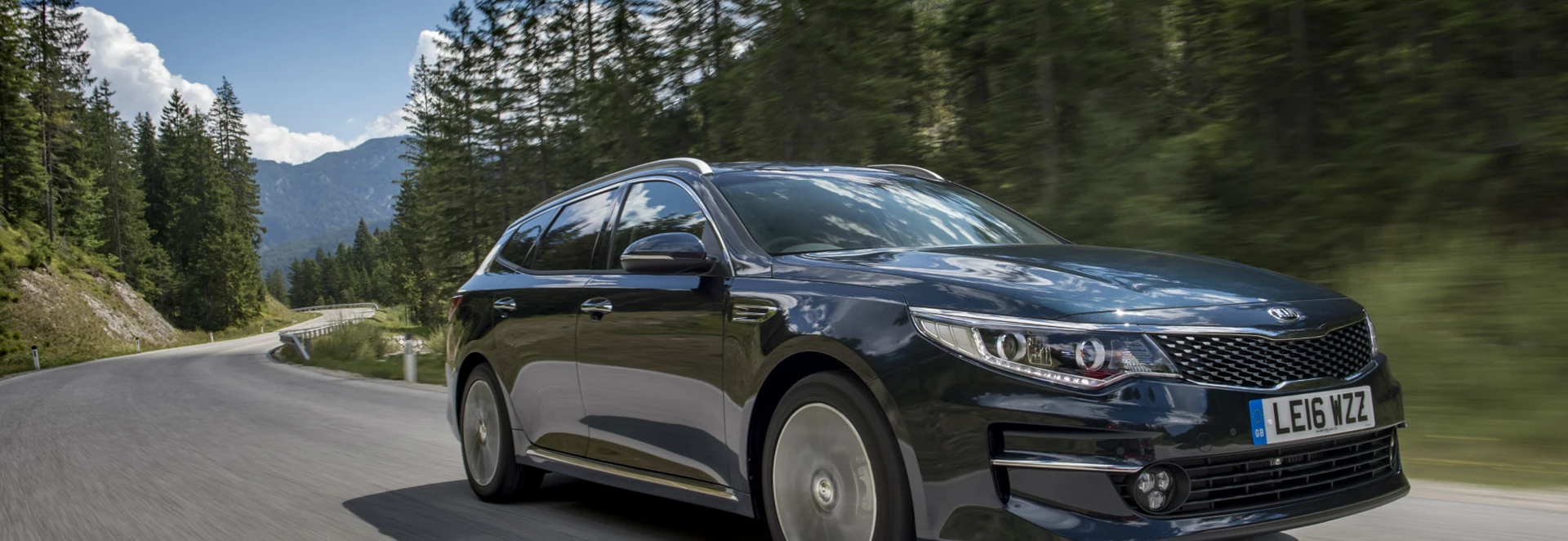Believe it or not, this new Kia Optima Sportswagon is actually the first proper family estate that Kia’s ever made. The previous-gen Optima was sold in saloon format only, mainly because Kia couldn’t afford to devote time at its Korean factories to making a car which will only really sell in Europe.
That’s since changed though, and now the Sportswagon is here to rival estate versions of the likes of the Vauxhall Insignia, Skoda Superb and the Ford Mondeo.
In terms of appearance it’s virtually identical to the Optima saloon apart from the extended boot. This is no bad thing, of course, as the Optima is already one of the best-looking cars in its class and the Sportswagon is no different, giving even the gorgeous Mazda 6 Tourer a run for its money.
It’s not all about the looks, either: it’s had its setup tuned by none other than the former vice president of BMW’s M Division. So does the Sportswagon finally address the Optima’s problem of prioritising style over driving substance?

Performance
For the time being at least, the only engine available with the Optima Sportswagon is the same 1.7-litre diesel that comes in the saloon version. To cut a long story short, it’s capable but not particularly exciting.
It makes a total of 139bhp, which is quick enough to cover the 0-60mph spring in 9.8 seconds with the standard manual gearbox, while the optional seven-speed automatic takes slightly longer at 10.7 seconds.
The engine does feel like it drags its heels a bit even when you push hard on the accelerator and groans as you get higher into the rev range, but it is fairly smooth and refined when cruising at a steady pace.
While the engine itself mightn’t be anything to shout about, the manual gearbox that came on the car we tested was surprisingly slick on the shifts, slotting into gear easily and with minimal fuss. We haven’t had the opportunity to test the automatic just yet, but it’s unlikely to feel as engaging as the manual.
Ride and Handling
The car feels more agile and more fun than its saloon counterpart.
There’s a bit more to talk about when it comes to how the car handles, at least. One of our major gripes with the Optima saloon is that it looks great but doesn’t quite have the driveability to match, say, the Mondeo. With the Sportswagon that’s not so much of a problem, thanks mainly to the input of aforementioned ex-Bimmer man Albert Biermann, who’s tuned the car’s setup to appeal specifically to family motorists who enjoy driving. It rides on all the same suspension components as the saloon but features revised spring and damper rates, which does make the car feel more agile and more fun than its saloon counterpart, but still not to the same standard as some of its rivals. The steering feels quicker than the saloon’s as well, and although it’s not particularly feelsome it is direct and accurate. It should be noted though that so far we’ve only tested the Optima Sportswagon on the flawless tarmac of southern Germany, so we’ll need to take it for a spin here in the UK get a proper handle on how the car drives on home turf.

Interior and Equipment
Kia originally started as a bicycle manufacturer and in 1957 built Korea’s first moped.
Inside, the Sportswagon is virtually identical to the saloon version, with the same upmarket dashboard and the BMW-style control layout, which is ergonomically set in the front fascia and very easy to use. Three trim levels are available here in the UK, starting with the entry-level 2 trim, the mid-spec 3 and finally the range-topping GT-Line S version, which gets a slightly sportier appearance to boot. Standard kit is impressive with the likes of sat-nav, a reversing camera and parking sensors all thrown in, along with Bluetooth connectivity and dual-zone climate control. Higher trims get a larger touchscreen, bigger alloy wheels and LED lights, plus extras like a Harman/Kardon sound system and a panoramic sunroof. The main selling point of the Sportswagon is its practicality though, which is impressive all round. There are plenty of cubbies and cupholders up front, along with lots of rear passenger space. With 552 litres, the boot isn’t as large as the Skoda Superb Estate’s, but it is bigger than many of its other rivals. Fold the rear seats down and maximum cargo capacity is an impressive, if not class-leading, 1,686 litres.
Cost
Prices for the Optima Sportswagon range start from £22,295, around a grand or so more than the Optima saloon.
Prices for the Optima Sportswagon range start from £22,295, around a grand or so more than the Optima saloon. Opt for the 3 trim that we tested and it’ll set you back £24,495, while the range-topping GT-Line S starts from £30,595. That makes it a bit pricier than the Superb Estate and the Ford Mondeo Estate, but undercuts the Mazda 6 Tourer by nearly £1,000. Even if the engine isn’t all that exciting, it is economical: officially, the Sportswagon can return up to 64.2mpg with 120g/km of CO2, which will make it attractive to budget-conscious private buyers and business customers alike.
Our Verdict
The new Kia Optima is one of the best looking cars of its kind in our opinion, and with the Optima Sportswagon Kia has struck the right balance between good looks, spaciousness and driveability. It’s still not the most exciting car in its class, nor is it the most practical, but it’s a fantastic all-rounder with a good mix of ability, smoothness and fuel economy.





